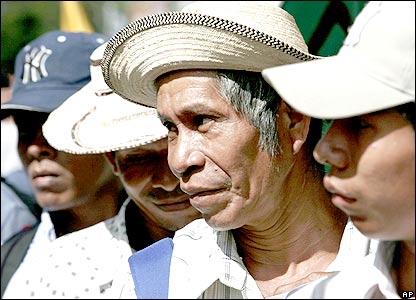Free Trade’s Not So Free: The Panamanian Case

When it comes to workers’ rights and high living standards, where’s the beef?
Eight years after Panama’s original free trade agreement (FTA) negotiations were carried out, October 12, 2011, witnessed the approval by the Houses with relatively little opposition from either the Democrats or Republicans. Both countries hailed the passing of the agreement with enthusiasm, and calls for continued economic progress and integration have resulted from the now-ratified agreement. Panama’s development in recent years has been all but unprecedented. In comparison to its regional neighbors, including El Salvador, Honduras, and Guatemala, which have undergone pandemic violence and relentless economic and social chaos in recent years, Panama’s evolution has proven to be stable and productive, if driven by unhesitating corruption. This expensively-bought stability has prompted the U.S. to negotiate an FTA with Panama since 2003 out of the certain knowledge that so much would illicitly be earned by so few. There was no mystery that the Panamanian FTA with the U.S. would be passed by a definitive vote. Previous FTA pacts between the U.S. and such Latin American countries as Peru and Chile have exposed the susceptibility of countries with small and fragile markets. Panama will be no exception to this rule and stands to have its own economy significantly warped and reorganized by its FTA once it becomes operational.
According to financial figures drawn up by the U.S. Commerce and the State Departments, the Panama FTA would generally tend to be beneficial to U.S. trade while proving detrimental to certain sectors of Panama’s economy. Currently, twenty-seven percent of all Panamanian imports come from the U.S., with these being limited to consumer goods and agricultural products. With the ratification of the FTA, tariffs on eighty-seven percent of all U.S-made goods heading for Panama will be removed immediately and the rest will be phased out over a ten-year period. The FTA also opens Panama’s service and financial sectors to local U.S. investment firms and corporations. In contrast to the apparent advantages the U.S. will now receive, Panama is scheduled to obtain limited benefits from the FTA other than those derived from its small agricultural export sector, the products of which will enter the U.S. free of all excises. Overall, as demonstrated above, Washington is destined to be the primary benefactor from their FTA.
Not only will Panama be targeted to receive fewer benefits from the FTA, the new arrangement should result in an array of negative alterations in Panama’s economic status quo. Previously, local agrarian sectors have been able to hold onto their protectionist tariffs, thus assuring their continued competitiveness for over a decade. The proposed FTA will reduce the import tariffs on pork, chicken, and agricultural crops. These tariffs range from 15 percent to over 273 percent and while they exist are able to shelter these products from international competition. These tariffs have been essential to the wellbeing of the average Panamanian, since over forty percent of the rural population depends upon the income from one of these sectors.
Panama’s agricultural sector is vital to the nation’s rural income, as it allows rural communities to subsist above the poverty line. FTA advocates who effectively control Panama insist that the FTA will immediately reduce import tariffs and expose Panama’s agricultural sector to the influx of U.S. farm machines and manufactured products. Multinational corporations like Cargill, Monsanto, and Tyson use goods obtained from industrialized farming and modernized food production operations to sell food at a reduced market price. Local Panamanian rural farmers cannot possibly compete with these companies, and the scheduled reduction and eventual elimination of tariffs will inevitably bring about the massive displacement of Panama’s rural population, which is not a cheerful prospect to anticipate. Another detrimental aspect of the FTA is that it puts Panamanian national companies at risk for their likely purchase and control. Currently, these sectors are mainly Panamanian-owned or dominated, but the FTA opens them up to U.S. investment and most likely will result in downsizing and reallocation of employment positions, which in this case could cost the isthmus jobs. This could be very alarming, since the standard practices of multinational corporations is to avoid reinvesting revenue in the corresponding foreign-based FTA partner, rather than focusing on reinvestment in the country of origin, in this case, Panama. U.S. corporate reinvestment funds could also be diverted to being paid out to foreign corporate shareholders, which could remove important sources of income and reinvestment opportunities from Panama.
Many FTA specialists are left arguing that Panama is at an extreme disadvantage in many respects when it comes to the FTA. These civic figures find themselves asking why Panama City was adamant on having the FTA enacted by the U.S. Congress. As previously reported by the Council on Hemispheric Affairs, FTAs could compromise local economies and induce profound public consequences that could be grave enough to ignite social disturbance. Panama will be no exception and stands to have an extremely limited benefit from the FTA.
This analysis was prepared by COHA Staff.

